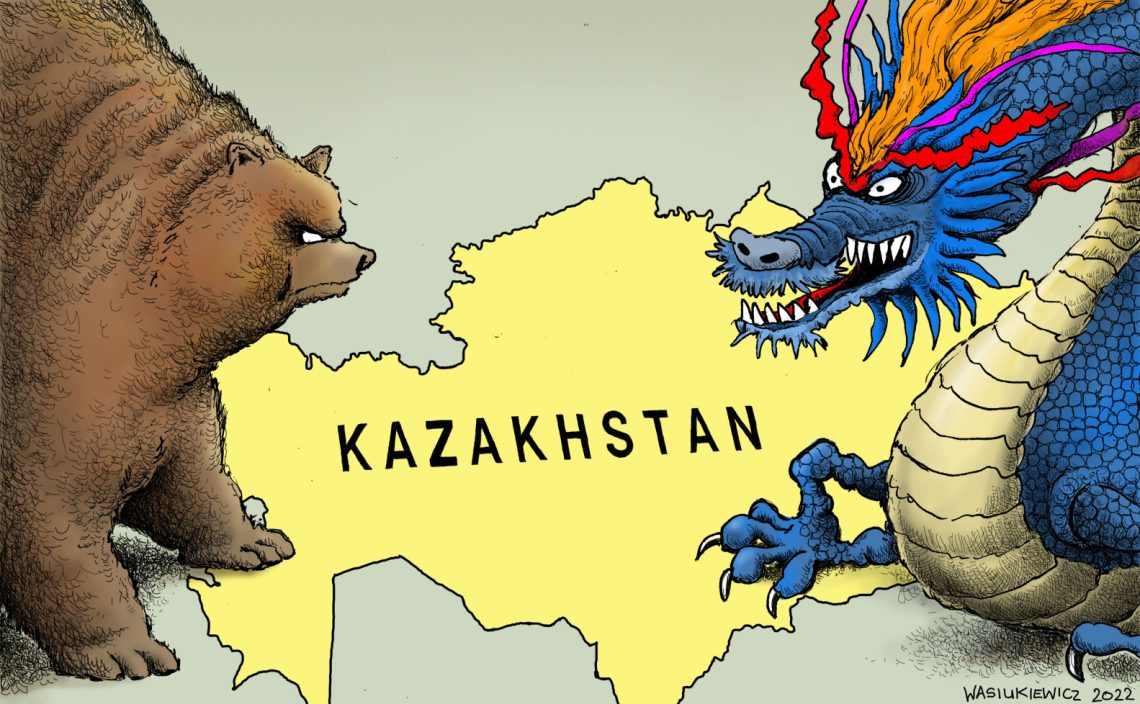Rebalancing power in Central Asia
After rising prices sparked violent riots through Kazakhstan, the Russian-led Collective Security Treaty Association stepped in. But the intervention could have greater geopolitical ramifications for the region.

Kazakhstan is a country roughly the size of Western Europe, with a population of around 19 million people. It is Central Asia’s largest country, and the second-most populous after Uzbekistan. Most inhabitants are Muslim Kazakhs, but there is also a sizeable Russian minority that accounts for 20 percent of the population.
Thanks to its natural resources – oil, natural gas, uranium and various metals – Kazakhstan has become a wealthy country. It provides approximately 40 percent of the global uranium output. This allowed elites, mainly those close to former President Nursultan Nazarbayev (1990-2019), to amass significant wealth.
From a geopolitical standpoint, Central Asia is a crucially important region. It consists of Afghanistan, Kazakhstan, Kyrgyzstan, Tajikistan, Turkmenistan and Uzbekistan. With the exception of Afghanistan, all these states were former republics of the Soviet Union and gained independence after its fall in 1991. Kazakhstan, Kyrgyzstan and Tajikistan belong to the Collective Security Treaty Association (CSTO), a security pact between certain post-Soviet states and Russia.
For the two decades that followed the creation of the Republic of Kazakhstan, Nursultan Nazarbayev ran the country in an autocratic manner. The current president, Kassym-Jomart Tokayev, was an appointee of Mr. Nazarbayev. Kazakhstan is often described as a “stable autocracy.”
Again and again, history shows that inflation triggers uprisings when populations feel their government does not represent them.
Kazakhstan is located in a geopolitical hotspot between Russia and China. It is a member on one hand to the Russian-led CSTO and Eurasian Economic Union, and on the other to the Chinese-centric Shanghai Cooperation Organisation. It is also noteworthy that Kazakhstan is a crucial part of the Belt and Road Initiative, a core vehicle for Beijing’s geopolitical ambitions. During his long rule, President Nazarbayev always strived to maintain the country’s strategic independence, keeping both Beijing and Moscow at arm’s length.
At the turn of the year, riots broke out in rural, economically disadvantaged and peripheral areas over an increase in the price of liquefied natural gas, commonly used as car fuel in Kazakhstan. Unrest soon reached the largest city, Almaty, and the capital, Astana.
Again and again, history shows that inflation triggers uprisings when populations feel their government does not represent them. These situations often allow political groups to use the instability for their own interests. This is also the case in Kazakhstan at the moment, and we are witnessing a rebalancing between the country’s political elites.
President Tokayev dismissed the government, introduced price controls and cut relations with the 81-year-old former President Nazarbayev. He ordered security forces to open fire on armed rioters. But the response proved insufficient, and he turned to the CSTO for assistance. The organization is presently chaired by the president of Armenia, a country highly dependent on Russia, and help was immediately forthcoming. The move played into the Kremlin’s hands, since it will increase its influence. The Russian military is now stabilizing the country, and the current power shuffle is likely to benefit Moscow.
The Kremlin is sending a clear signal that it does not want to lose ground to Chinese interests in Central Asia.
Continued unrest would have had a detrimental effect on global oil and gas prices, pushing prices even higher than they are now. Kazakhstan is both a producer and transport hub for gas deliveries from Turkmenistan to China. It is also a crucial exporter of uranium, and further rioting could have affected supply security. Cryptocurrencies were also at risk, since a significant part of the mining, especially of Bitcoin, is carried out there.
It appears that the Russian intervention will be successful at stabilizing the situation.
For Moscow, what mattered was to show that stability and Russian influence in the region is being maintained through the CSTO. This is also significant for Beijing – the Kremlin is sending a clear signal that it does not want to lose ground to Chinese interests in Central Asia.
